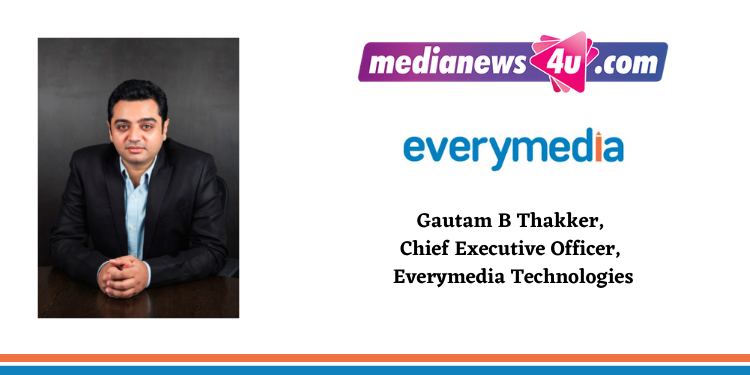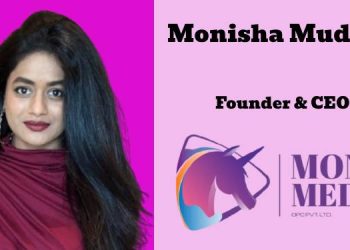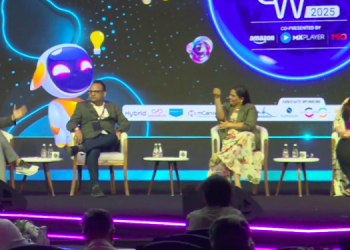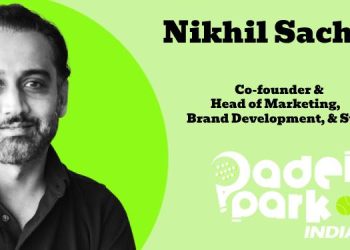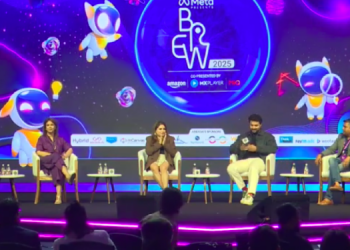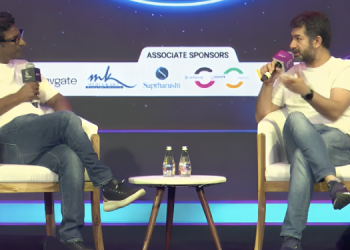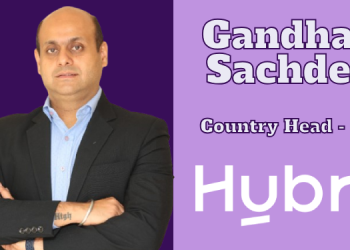Everymedia Technologies Pvt. Ltd. was founded in 2009; it is one of India’s leading digital media tech companies. The company caters to a variety of clients across films, brands, media owners, and celebrities. Every media is a Digital Experience Company for evolutionary brands. The company creates work that matters to people by transforming brands, the re-imagining customer experience at every touchpoint: digital, social, virtual, and physical.
Gautam B Thakker is a serial entrepreneur and a self-confessed workaholic. He looks into the overall management as well as strategic growth and development of the company. Under Gautam’s leadership, EveryMedia has played an integral role in revolutionizing the way brands, movies, and political campaigns are implemented in India.
In an exclusive chat with Gautam B Thakker, Chief Executive Officer, Everymedia Technologies, he shares his insights on Digital Marketing, branding for films, and much more…
The pandemic has seen the surge of digital platforms, how are the digital agencies facing this new challenge in regards to talent?
It has been a year since major digital agencies, including ours, shifted to the work from a model and since then, we saw the quantum of work across industries and verticals increase significantly. One of the key challenges faced by all the agencies during this period is the mental and emotional wellbeing of its employees and the toll the pandemic and lockdown took on each individual. Another key challenge that everyone faced was recruiting talented individuals through virtual interviews. While hiring the right people is challenging in itself, it was more difficult to understand how a person would adapt to the current working situation through virtual interaction. It is important to recruit adaptable and flexible people in every team so that the company flourishes, however, the pandemic took away the opportunity to have face-to-face interaction and understand the new talent, while it also took away the ability to exchange each other’s vibe and energy that a team does when they work with someone in the same physical space. In fact, the surge in demand for Digital Platforms has paved the way for good content i.e. films, movies, and web series to release in the digital space last year. Digital marketing, digital advertising, and consumption of news also saw a massive spike ever since the pandemic started. This growth in demand meant that the digital agencies needed more talented individuals to help them rise and succeed. Discovering smart and talented people to handle such projects has posed one of the challenges for all digital agencies and we will have to come up with an optimum solution to help identify young, dynamic, and experienced personnel.

Are you seeing a shift in how brands are now looking at digital as the front runner when it comes to delivering their brand communication?
Yes, we are seeing the shift quite evidently. Considering the number of existing brands in the market and the choices that are available for the consumer, I would say digital platforms have opened up the market for everyone. For each choice, there are multiple options provided at varied price points and you need a smart mix of digital communication strategies to get through to your audience. Initially, brand communication was seen as an information outreach. Creativity while imparting necessary information to the public was the only major factor to drive consumption. Now, it has become a two-way street.
A brand needs to constantly engage with its audience and convince them to stay on its social media pages and they also need to position their products in the best way possible for people to notice them. So now, communication has largely become based upon interaction. In fact, digital platforms have also opened avenues for different points of view. Brands are open to various interpretations of what their product might mean to different sets of their audience because their target group has transcended the stereotypical way they used to look at a particular product and hence, communication has become more open, which in turn has led to brands adapting to the changing mindset of the consumers faster than ever before.
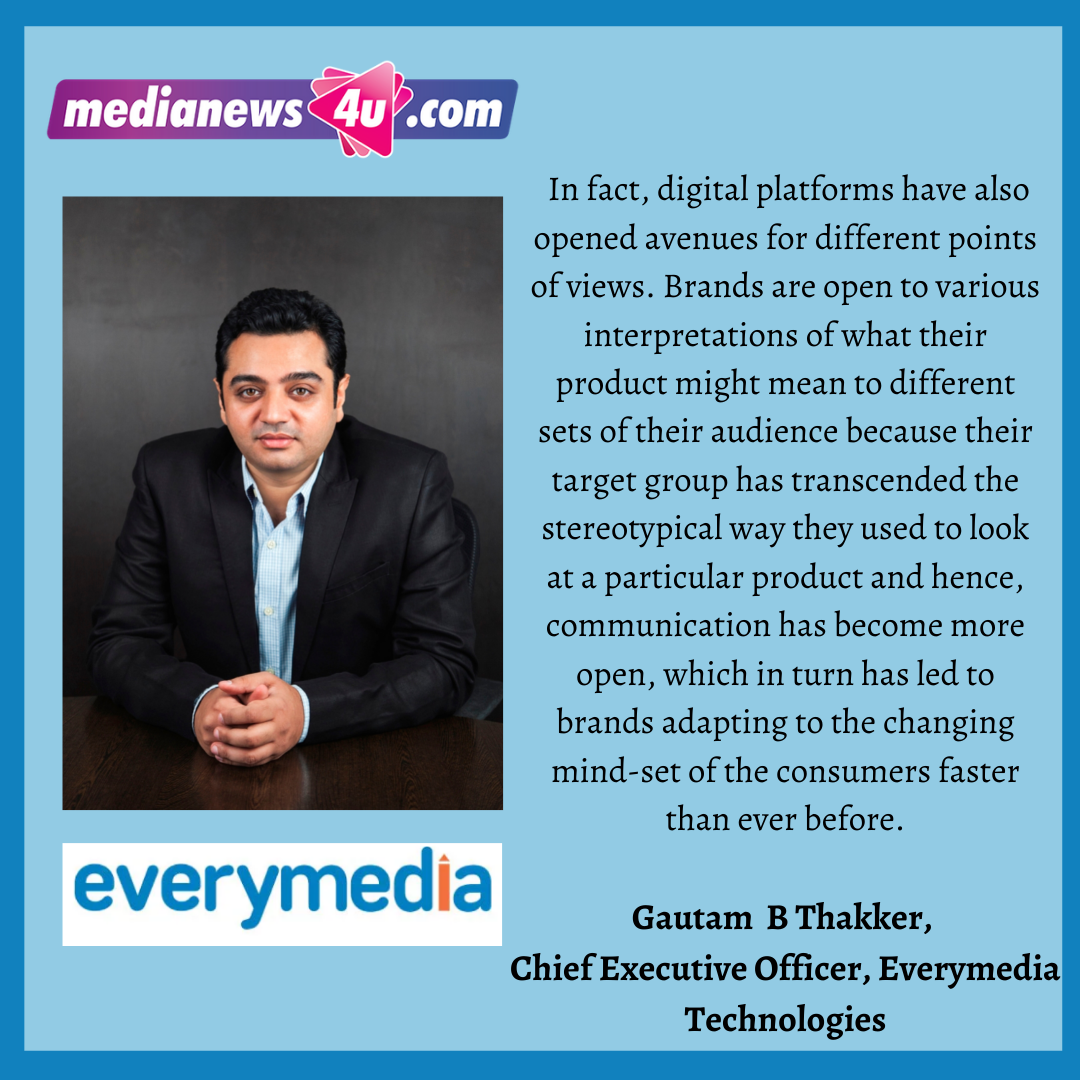
How have the digital platforms performed in the last quarter and the beginning of this financial year?
The last five years have seen consistent growth when it comes to the digital space. If we look that far back, the most popular players in the digital market were Facebook, Instagram, and Twitter, Facebook being the most used platform. However, in recent times, we have not only seen the expansion of new and different platforms but also how people are embracing the innovations brought by them. As a result of that, even Facebook, Twitter, and Instagram have been forced to constantly change their features, add new and interactive mechanisms to suit the growing need of consumers to be a part of the digital world, amongst other things.
In fact, the first quarter of 2021 has seen an insurgency in the performances of various digital platforms. Instagram nearly doubled its consumer usage through video consumption, especially with IG Reels becoming its real hero. The fact that people are being able to creatively say what they want to communicate with their audience in 30 seconds proves the fact that digital has seen a huge shift in terms of its consumer base and choices.
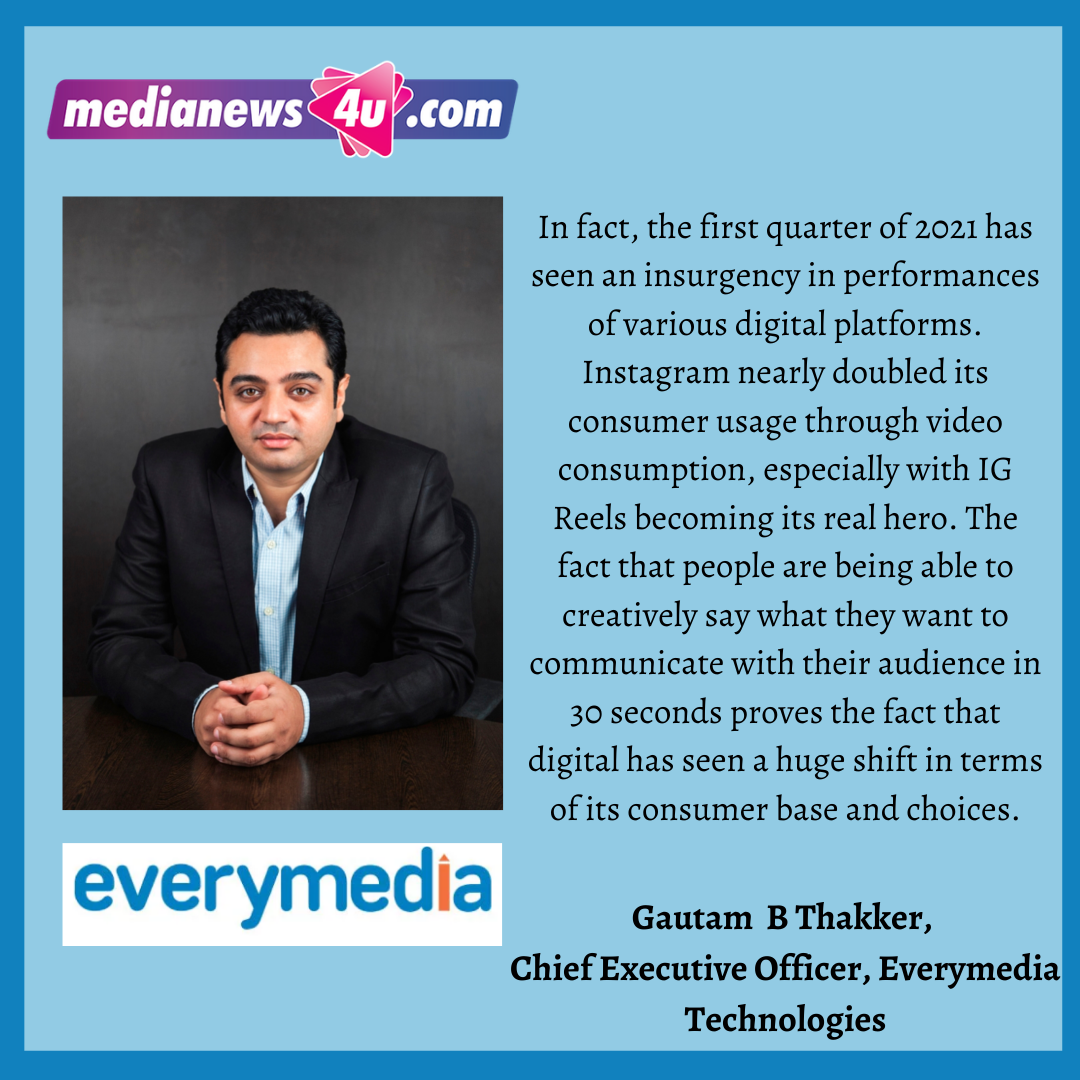
India has also become the country with the second-highest number of Instagram users in the world after the USA. The digital platform has become one of the most important tools of communication for brands as over 10% of the Indian population is said to be on the platform, which is huge in terms of sheer numbers. So, a presence on this platform is a must for every brand to succeed. If we look at the last financial year, according to several statistics, Indian users on Instagram have also grown by over 50% since April 2020, again a massive number. (Ref: https://napoleoncat.com/stats/instagram-users-in-india/2021/01#:~:text=There%20were%20144%20080%20000,group%20(62%20000%20000).) Even YouTube has become a great platform for the digital streaming industry. The video platform has one of the biggest consumer bases in India with over 200 million users. For several brands and agencies, it is emerging as the go-to platform to communicate with their audiences. (Ref: https://www.globalmediainsight.com/blog/youtube-users-statistics/)
But I feel this is all just the beginning. The doors to new avenues have paved the way for digital platforms to flourish and grow and we will see it evolving and growing from time to time.
Digital is still not measured, how do brands evaluate and measure their performance?
There are multiple tools of measurement emerging day-by-day, one of them being viewing the brands’ performance through their engagement rate. Initially, the numbers of followers, views, amongst other things were the barometers on which we based our calculations, but now, over the past year, we have realized that the number of people who engage with the brand on a regular basis is what actually counts. A lot of digital users still have scrolling syndrome. That is what people do, they scroll through their social media accounts without actually engaging with any post or brand. So while we are receiving the necessary exposure for the brand, it is the engagement rate that defines if we have incited a positive reaction from them. Many purchasing decisions happen via the brand’s engagement rate and how their videos and posts are interacting with the audience. However, this is just one tool we use. There are multiple tools out there that are being developed constantly where we can also see the sentiment of the audience regarding a brand or its campaign or its product and the communication it is sending out.
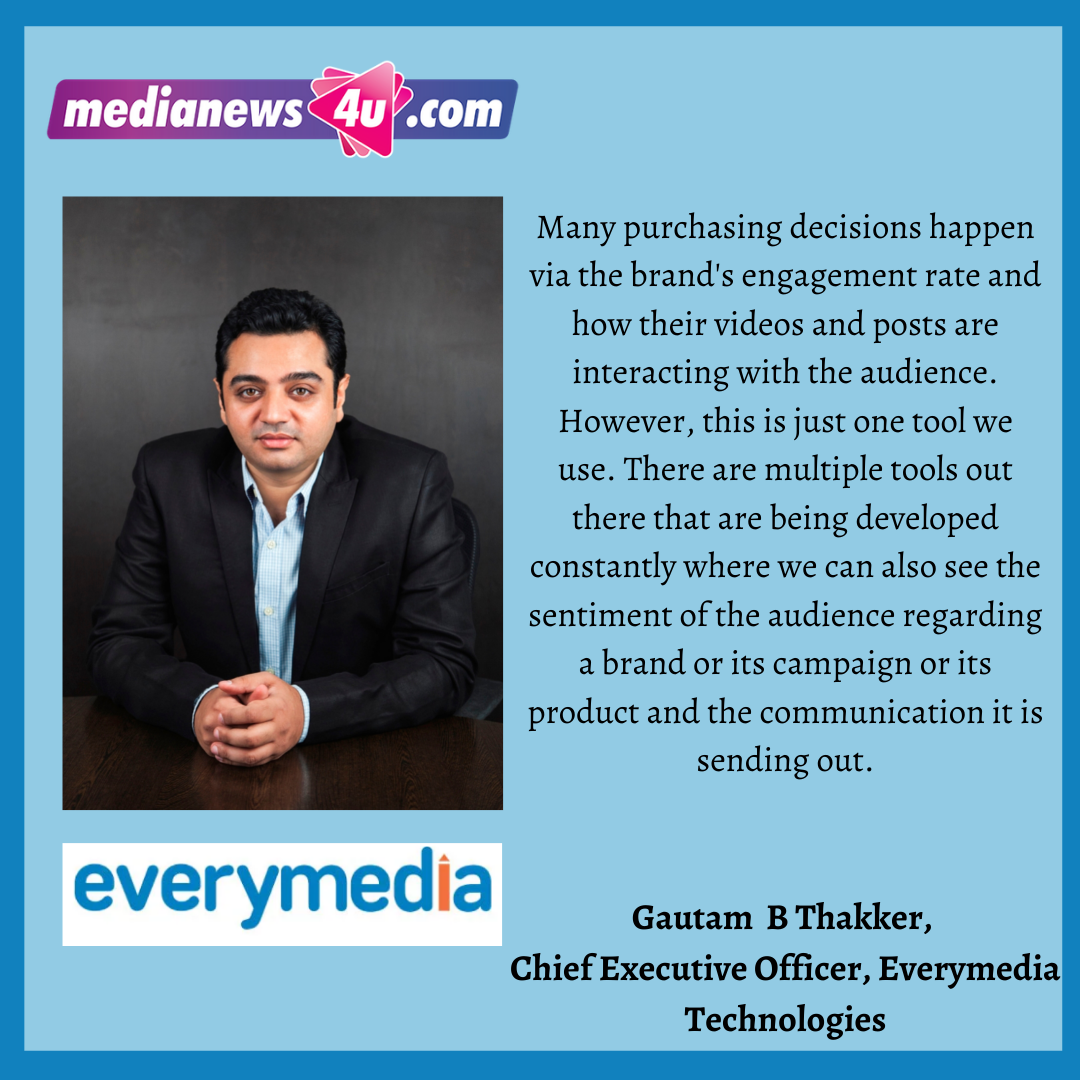
How do you evaluate and conceptualize a movie to brand it and spread the message on the digital platform? Can you share some campaigns in the recent past?
Movie marketing as a term has existed for a long time, but it has evolved recently because of several innovations at its core to help engage with the audience. The great thing about Movie Marketing is that not one campaign will be similar to the other. In fact, even if movies are similar in genre and their storyline, their promotional campaigns have to be different to have a novelty factor. Also, each team works with different perspectives and that helps each movie’s communication and marketing strategy to be different.
I must say that in today’s day and age, there are several avenues to base your concepts and communications on, for example, you can base your strategy on this basis of the storyline, the actor’s popularity, the target audience, the buzz and trends that you spot on digital platforms, the media sentiment, so on and so forth. For us at Everymedia, the conceptualization for a movie and the idea to turn into a brand begins as early as possible. We start with evaluating and assessing the audience’s connection with the story and the actors. We all know that in India, movies are a religion and the audience is not only investing their time and money but their emotions in it as well. Our actors also have a fan-following that is an anomaly to the film industries of several other countries. If we crack an innovative idea to involve the fans and the audience and make them feel like they are a part of the cinematic journey, then we can surely create a successful, multi-layered brand. We see to it that our films strike the right chord with the appropriate communication and we work on finding innovative and engaging ideas to reach out to the audience. We also strive for every movie marketing campaign to be a unique and remarkable experience for the consumers.
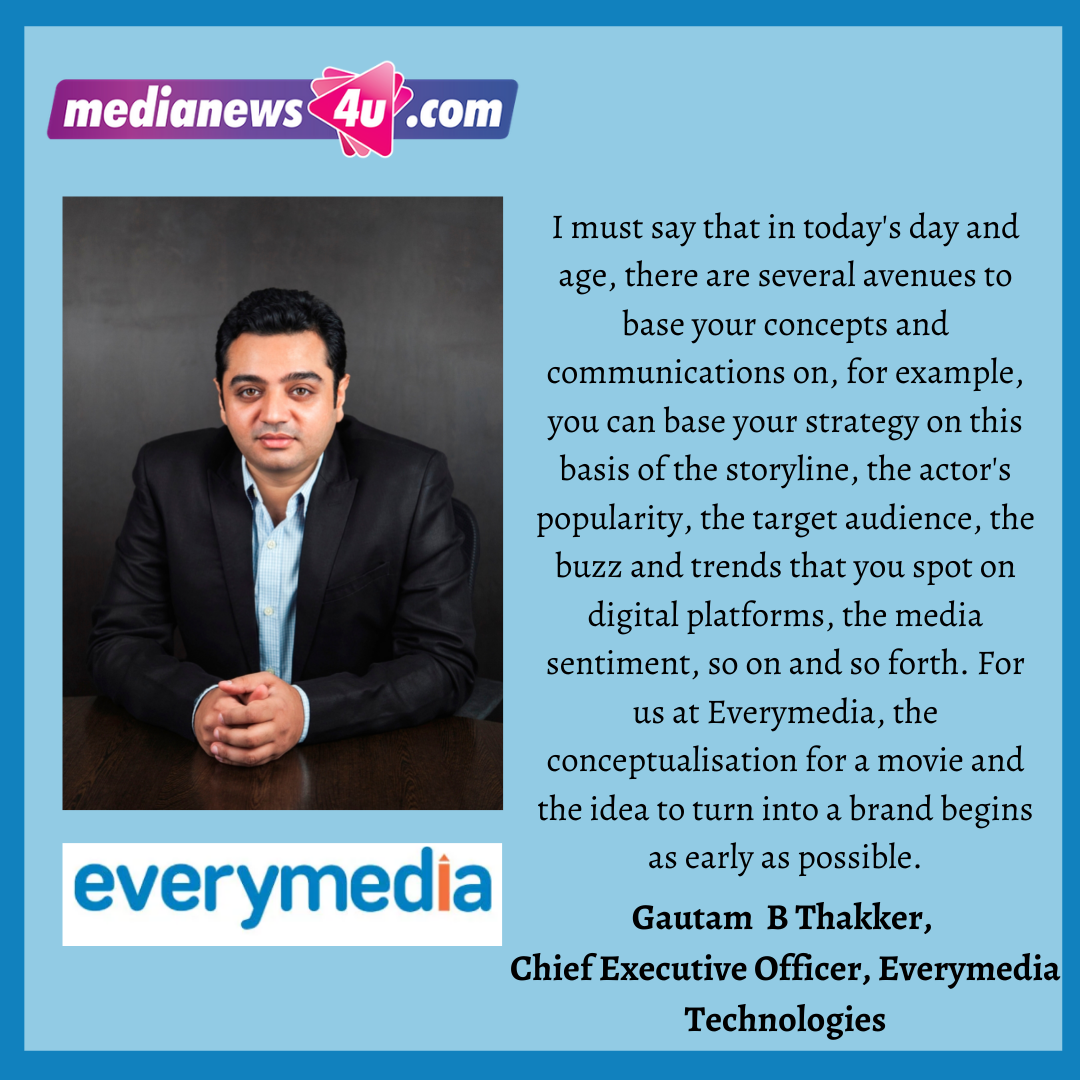
One of our recent campaigns that I’d like to highlight is Ajay Devgn’sTanhaji: The Unsung Warrior. Even though we have handled movies of such scale before, however, it was the first time we had several Ajay Devgn fan bases come together in support of an untold story of a National Hero. The strength of his fan following and their excitement along with a massive word-of-mouth campaign made it one of the highest-grossing movies of 2020.
Another example that I can shed light on is Tamil superstar, Suriya’sSooraraiPottru which was streamed on Amazon Prime Video in November 2020. The movie had a very experience-driven campaign since Suriya himself was emotionally involved in the campaign and so were his fans. By creating this undeniable yet tangible experience for them is how one knows they have created a brand and that it will be remembered by the audience for many years to come.
With more start-ups entering into the digital sphere how do you see this market in the next 3 years?
In the next three years, the investment in technology and start-ups will see an increase as everyone tries to gain a competitive edge in the market. As one of the longest independent agencies in the market, we have witnessed the growth of start-up companies on a regular basis. These start-ups are doing some very creative work, but I still feel that instead of having start-ups and agencies competing with each other, a strong digital network should be formed to support each other. We should be pushing the envelope together to make sure that the work that is being done by all, especially in the creative sectors, is acknowledged and commercially appreciated by one and all. There is only one plate, if everybody’s going to constantly fight, someone is going to end up being hungry. So I believe that we all need to be working together.
In the coming three years, looking at the growing competition within the industry and owing to the integration of AI, machine learning along connected infrastructure, the market is expected to witness rapid growth. I feel there is so much to look forward to in terms of technological developments and the adoption of wireless communication will be at the forefront. It is booming, and the penetration of this technology will expand going ahead, driving the rate of digital transformation.
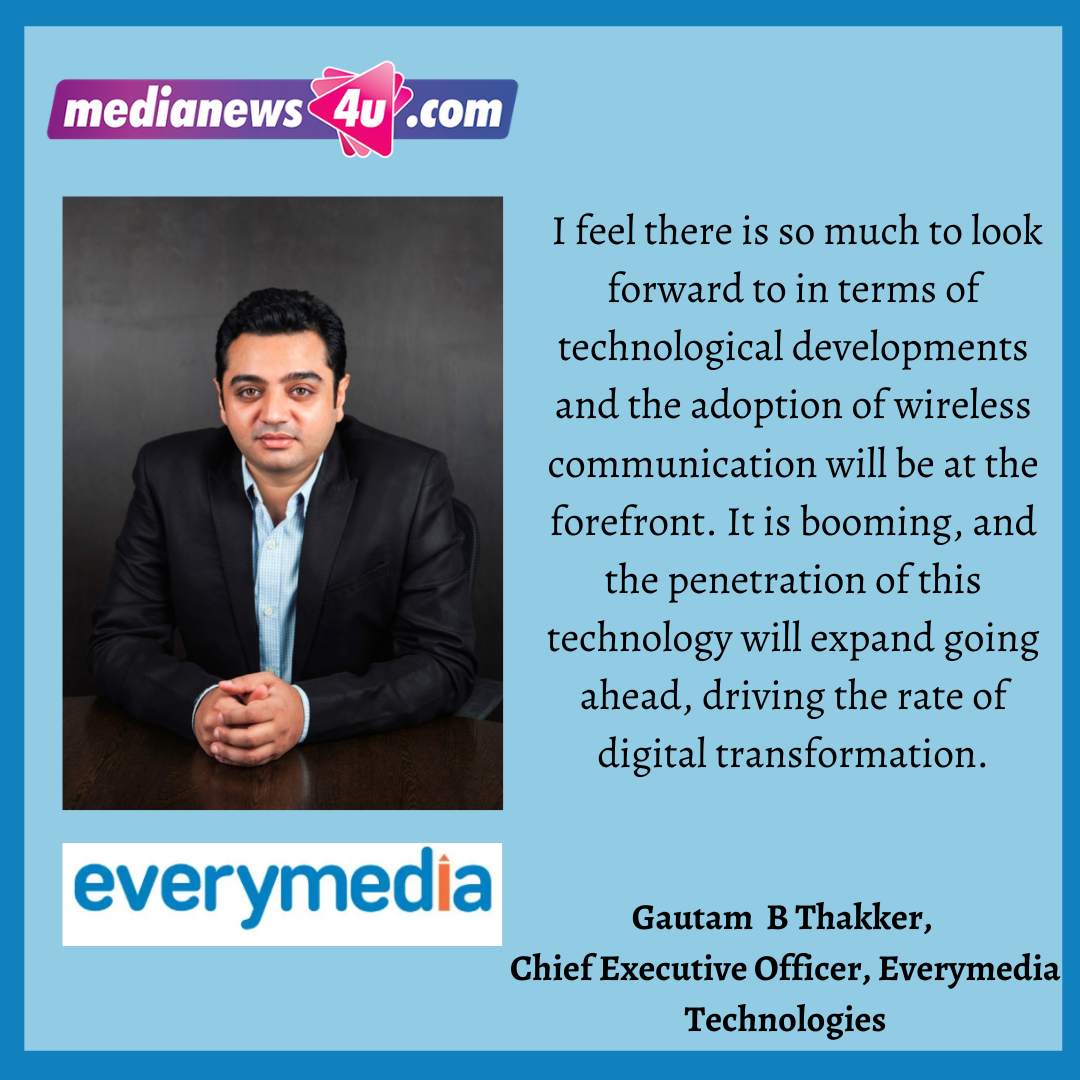
Will this spurt of start-ups also see fresh investments or will big agencies acquire them?
Yes, I do think that investments in start-ups are going to witness a significant rise, especially given that digital platforms have become the frontrunner when it comes to brand communication. Also, more and more companies are going the digital way. Hence, it is definite that the investment is going to increase.
What is the difference and challenges in strategizing for a regular brand and a movie?
I don’t think there should be any bifurcation between both brands and movies. We need to stop looking at them separately. Eventually, the movie is also a brand because everything turns into one and that is what we market. Everything is a project and every project comes with a different set of challenges because every project has to cater to the message they are trying to deliver. There are going to be challenging across the board, whether you are working on a recently launched brand, a ? renowned brand, a talent, a movie or anything else because everything comes down to one thing – how the brand connects with the audience and what is the story behind it.
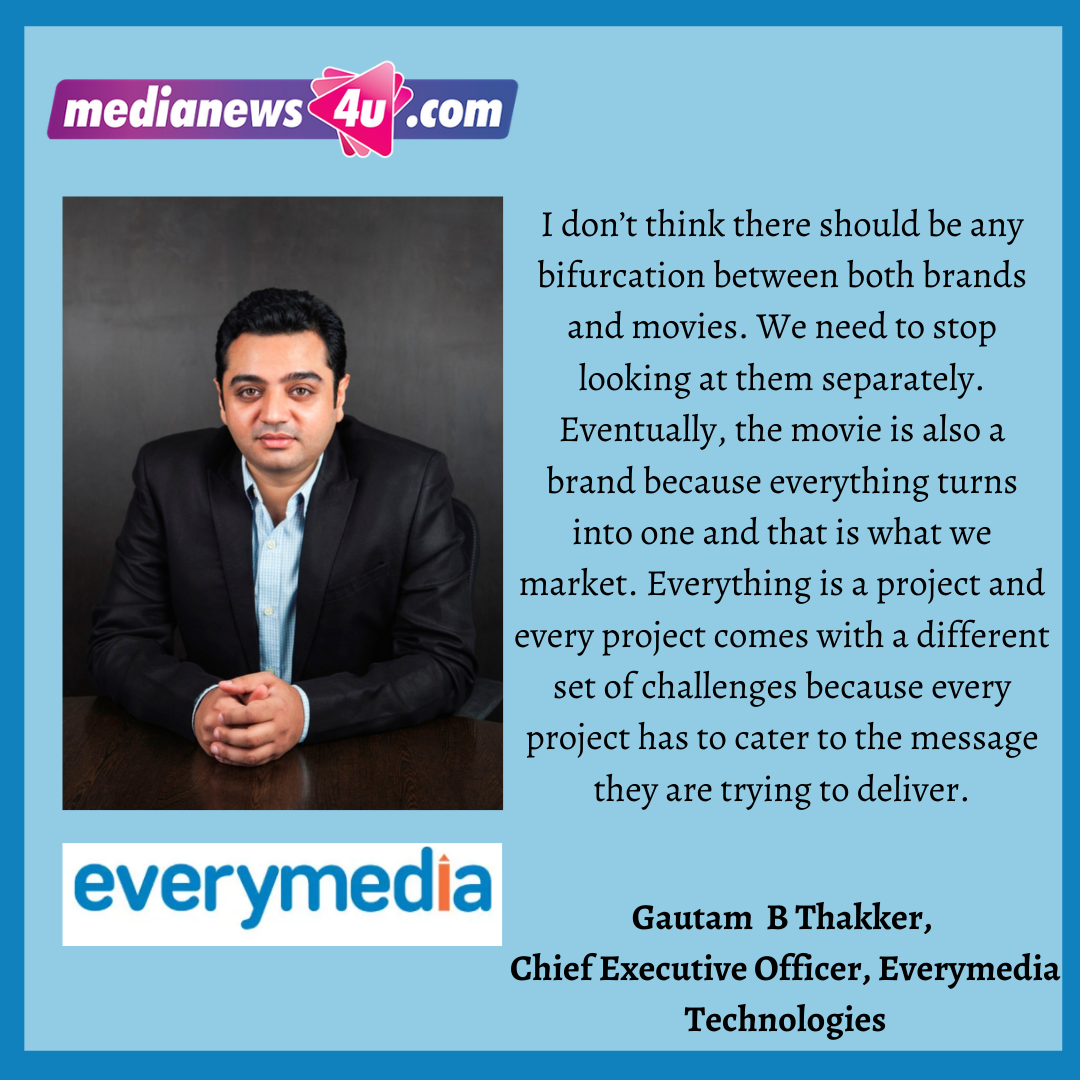
As the CEO of Everymedia Technologies, I would say that I do not see any difference between a regular brand and a movie since every project with a creative output has to be nurtured and grown into something big.

